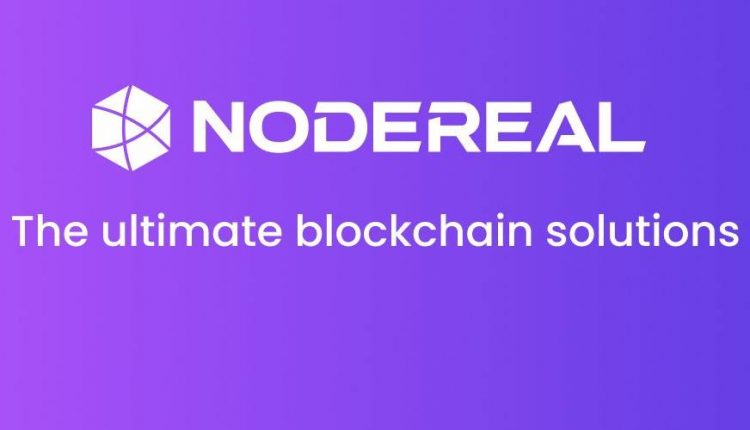NodeReal’s Ben Zhang on how to make good blockchain games

Under the banner “fastest, reliable and instant”, NodeReal was founded in 2021 and has become one of the prominent blockchain infrastructure providers in the web3 space.
BlockchainGamer.biz checked in with the company’s COO Ben Zhang. With a background at BNB Chain, he shares his expertise on a range of challenges facing blockchain game developers, what role infrastructure plays in the quality of their games, and what is required to make a good blockchain game.
BlockchainGamer.biz: What specific challenges does the blockchain gaming industry face in terms of infrastructure, and why has it taken so long to address them?
Ben Zhang: From an infrastructural perspective, one of the persisting challenges in the blockchain gaming industry is scalability which refers to the ability of existing networks to process large volumes of data at fast speeds. In the context of blockchain gaming, high scalability also needs to be possible while keeping costs low. This is critical to the long-term success of any game which hopes to attain mass-popularity as its player base continues to grow.
In my opinion, the infrastructural challenges faced in blockchain gaming aren’t too dissimilar to the broader challenges faced by the blockchain industry as a whole. In the grand scheme of things, the technology itself is still quite young and the building never stops — improvement is an iterative process. It’s important to bear in mind that blockchain games only first entered the market in 2017 with CryptoKitties, but we only gradually began to see interest from traditional studios — be it Ubisoft or Atari — within the last 2-3 years.

“To build good products, projects need the right tools to begin with.”
Ben Zhang
Ultimately, this is still an ongoing journey and the blockchain gaming industry still has a long way to go — I believe that with better gaming-specific infrastructure, game developers will have the guide rails to build better blockchain games that can mimic the same experience as traditional titles.
How does the lack of reliable and enterprise-grade infrastructures hinder the growth and development of the gaming industry?
The consequence of not having reliable, enterprise-grade infrastructure that can support the high transaction processing speeds is poor gameplay. At the end of the day, would you want to play a game that’s slow and almost prohibitively expensive? Of course not — that would take all the fun out of it.
Take CryptoKitties — at the height of its popularity, users complained that it was more expensive to execute the transaction required to purchase a virtual cat. This was ultimately due to a congested network that lacked the computational power to process transactions quickly and cheaply enough.
In order to accelerate the growth and development of the blockchain gaming industry, the infrastructure must be able to support both gamer demand and game developers who have ambitions to build AAA blockchain games. With enterprise-grade infrastructure, game developers can focus on designing fun, sophisticated games — and these titles with better gameplay that will ensure long-term gamer retention — rather than worrying about speed and scalability.
Can you elaborate on the role of infrastructure builders in blockchain gaming investments? Why is there a significant portion of investments directed toward them?
In the context of blockchain gaming investments, infrastructure builders played a big role in attracting $2.5 billion — over a third of the total amount raised — for web3 games and metaverse projects in 2022.
This is not surprising — investors understand that to grow an industry, you can’t only focus on the end product. To build good products, projects need the right tools to begin with. That’s why a large portion of funding is going to infrastructure projects today.
What are some examples of successful infrastructure service providers in the gaming industry, and how have they contributed to the growth of GameFi projects?
The game-specific infrastructure service provider space is still relatively nascent, but some rising stars in this sector include the likes of Chainstack, Horizon Blockchain Games, as well as COMBO, the latter of which is one of our partners. Like us at NodeReal, we’re all unified in the same goal of giving devs the much-needed infrastructure to support their games as they grow and scale.
At NodeReal, our contribution to the GameFi space is, Semita, which allows clients to scale their Web3 applications either with a custom application chain or with layer-2 scaling solutions based on Zero-Knowledge (ZK) and Optimistic rollups. Semita helps to reduce transaction fees while keeping both performance and security high, all while reducing the implementation and launch time of their projects.
Some examples of blockchain games that already use our solutions include FNCY, Tiny World and Summoners Arena. With more game-focused infrastructure providers entering the market, we can certainly expect to see even better titles emerging in the scene — ultimately, this is a win-win for everyone involved in the industry.
How does incorporating blockchain elements into web2 titles go beyond creating hype and actually generate tangible value? Can you provide specific examples?
An exorbitant amount of money is spent by traditional gamers each year on in-game collectibles such as skins or exclusive avatars which is estimated to surpass $74 billion by 2025. However, what happens when gamers move on to their obsession or if a game is discontinued? By encoding and storing in-game assets on-chain, this ensures that gamers have complete ownership of their purchases even if a game shuts down or their account is deleted. After all, they paid for these assets with their own money and thus, should be able to control what happens to them.
In this case, in-game assets can be sold for fiat or traded on public marketplaces. Meanwhile, buyers on second hand markets will be able to trust that these in-game assets are authentic as their record on a public blockchain is inherently immutable — this adds a layer of safety for both buyer and seller.
I believe that the next wave of mass Web3 adoption will come from blockchain games — the existing emphasis on that community ethos is core to the gaming industry and it’s also such a large part of what makes projects in the Web3 space successful.
Ben Zhang
Providing real-world utility is one of the greatest benefits that blockchain can offer to traditional Web2 games. Even traditional giants such as Nexon have realised this, explaining that the rationale behind a blockchain version of MapleStory was to make the game “even more fun” by maximising the reward experience. At the same time, web2 executives who’ve since moved on to web3 have realised the equalising power that blockchain offers to gamers who spend so much on in-game assets without ever fully owning them.
What are some current limitations or obstacles that prevent the seamless integration of blockchain technology into existing web2 games? How can these obstacles be overcome?
What makes implementing web3 into web2 titles challenging ultimately boils down to cost and the need to secure buy-in from both internal and external stakeholders.
On the first point, cost extends to various aspects of implementation — building infrastructure from scratch and hiring teams with specialised knowledge are both undeniably expensive. Much like what we saw with the advent of Amazon Web Services in the traditional cloud industry, this is where managed services can come in to address the cost-efficiencies of implementing a new technology. Rather than relying on in-house capabilities to build from scratch, a one-stop solution can alleviate these challenges, freeing up time for game devs to just focus on what they do best.
The issue of buy-in is a little more challenging. Ultimately, it’s up to a business to come up with a compelling business case for why their game would benefit from the addition of web3. Does it make sense for their players? Does it make sense for the existing gameplay? These are the types of questions that traditional studios should ask themselves before entering web3. As we’ve seen in the past few years, the traditional gaming industry is not without its sceptics — so much so that some games have scrapped their blockchain implementation plans altogether.
It’s important to remember that blockchain is far from a silver bullet — and the onus is on business leaders to assess whether it really makes sense for them.
Can you share any insights or success stories from NodeReal’s work with gaming-focused clients, such as Metaverse World and Alibaba Cloud Japan, in terms of enhancing their infrastructure for blockchain gaming?
To date, NodeReal’s blockchain gaming clientele includes the likes of FNCY, a product by Metaverse World, the web3-focused arm of NetMarble, South Korea’s leading mobile gaming giant Alibaba Cloud Japan, web3 game scaling solutions provider COMBO, and gaming network built on BNB Chain, Project Twelve (P12). All of our partners leverage our custom solutions to strengthen their blockchain gaming applications, namely as a means to increase scalability and performance to keep pace with user demand.
Through plug-and-play gaming-specific infrastructure solutions provided by NodeReal, game developers can easily integrate blockchain elements into their games with the assurance that their games will meet all the scalability and security needs required. Our partnership with Alibaba Cloud Japan plays a critical role in better educating the market, given their focus on traditional game developers interested in transitioning to Web3 gaming — we gave them a space to safely experiment with cutting-edge tooling.
Considering your experience with BNB Chain, what lessons have been learned in building a successful blockchain for GameFi projects?
My time at BNB Chain showed me that the interest and appetite for blockchain is already here — however, the existing technology in the market simply isn’t ready to support the billions of users that we see today in web2. How can we conceive of any sort of meaningful mainstream adoption if the infrastructure isn’t there to support it?
The good news is that I believe that the next wave of mass web3 adoption will come from blockchain games — the existing emphasis on that community ethos is core to the gaming industry and it’s also such a large part of what makes projects in the Web3 space successful.
Aside from this, much like a layer-1 ecosystem, where the core team is focused on developing tooling, the same needs to be done for blockchain gaming. The underlying networks and infrastructures need to focus on developing a better foundation for web2 or web3-native studios to build on. Rather than getting excited by the prospect of the next best title, we need to take a step back and ask ourselves if we’re really building on and with the right tools.
Don’t miss out on any daily news from the blockchain games space: sign up to our Substack, follow us on Twitter and connect with us on Linkedin.
